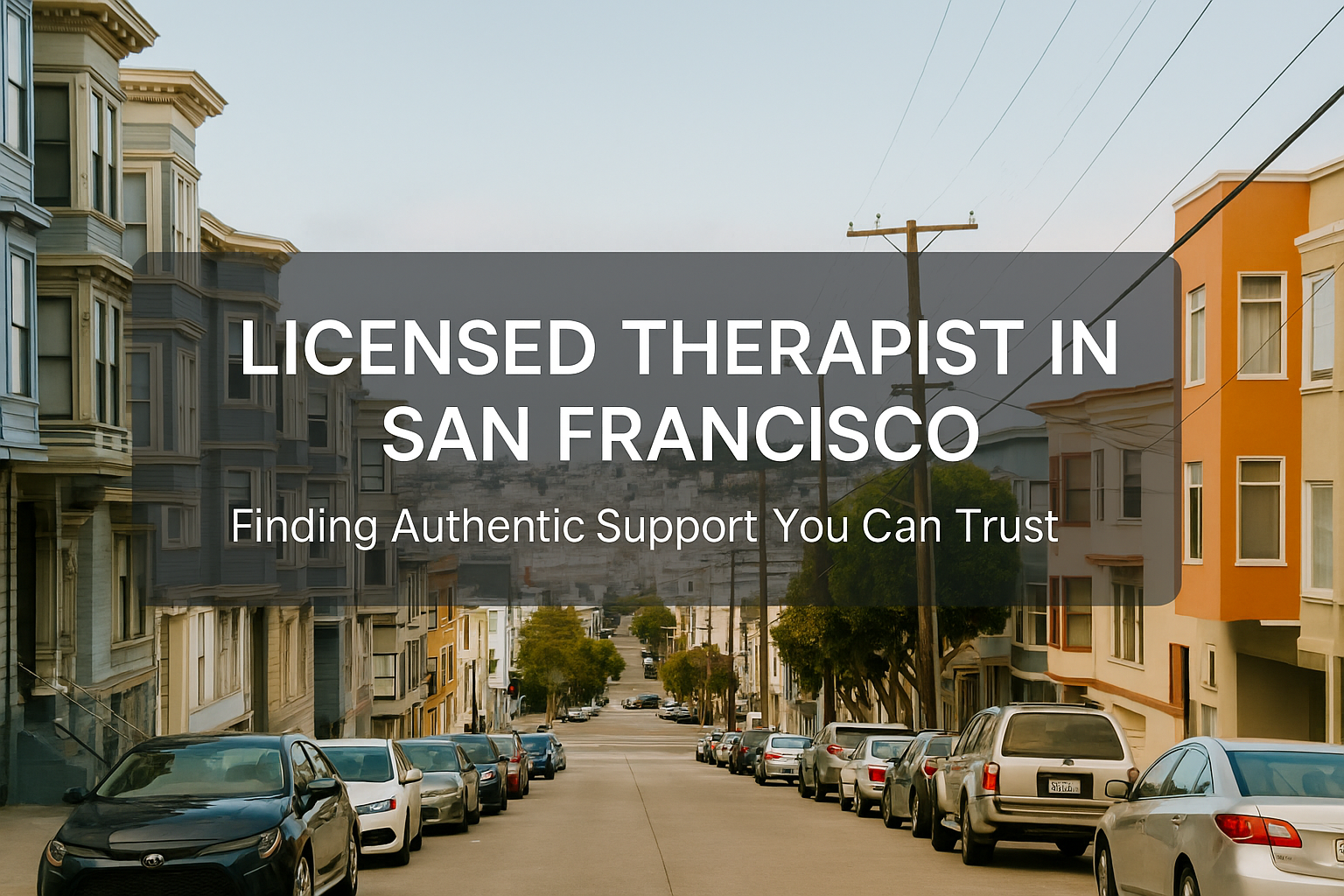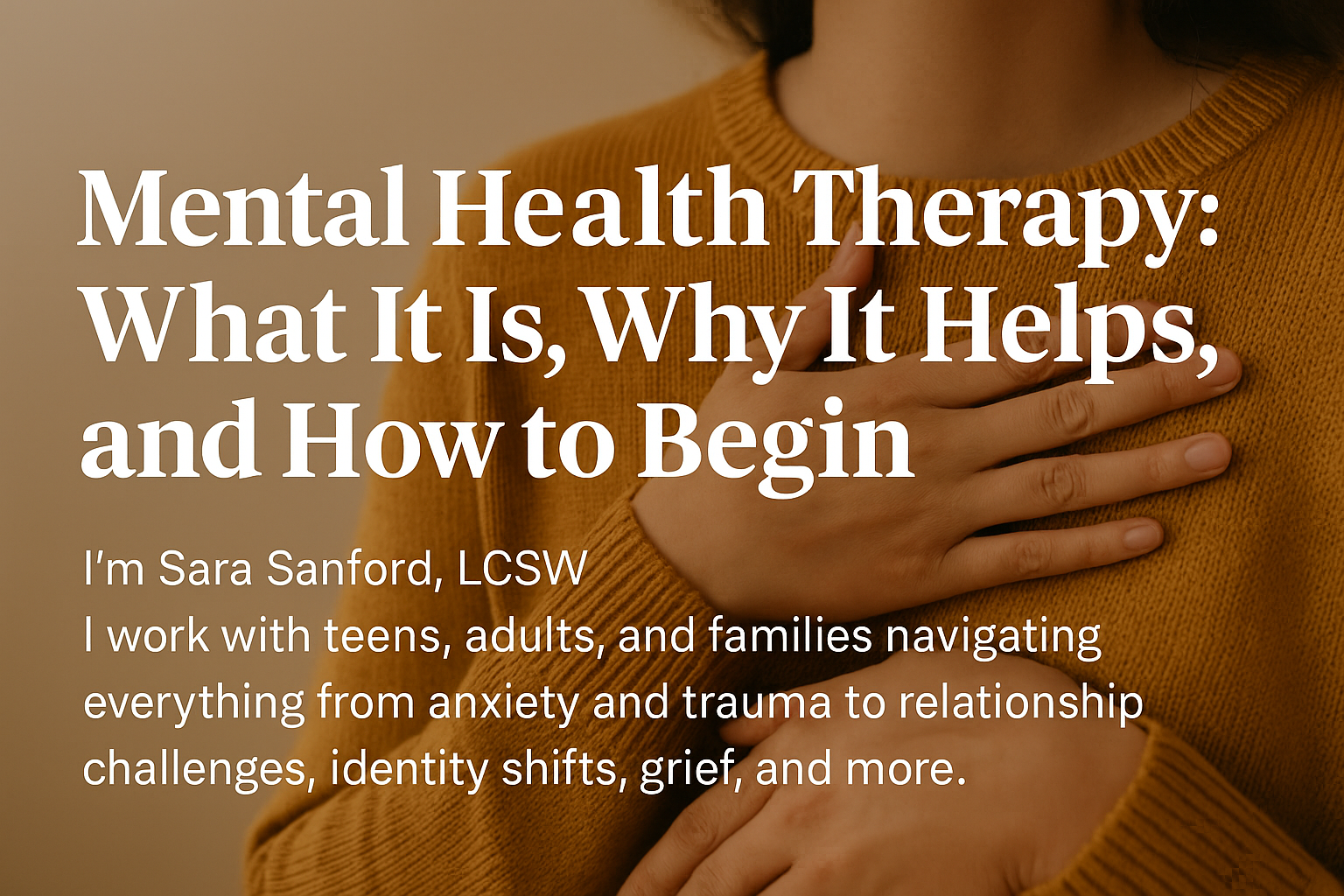Have you ever caught yourself rushing through the day—school mornings, work deadlines, social commitments—without stopping to simply breathe? Mindfulness isn’t about becoming a monk; it’s about grounding yourself in the moment. And mindfulness therapy programs take that concept deeper, guiding you through a structured, healing process rooted in presence and self-compassion.
I’m Sara Sanford, LCSW, and I’ve seen the way mindfulness can transform lives—calming anxiety, reducing overwhelm, and helping people feel more connected to both themselves and others. Let’s explore how mindfulness therapy programs can become a loving invitation to come home to yourself.
What Is a Mindfulness Therapy Program?
Unlike one-off practices, mindfulness therapy programs are intentionally designed sequences—spanning weeks or months—that guide you through:
- Foundational practices (breath, body awareness, and mindful noticing)
- Deepening emotional regulation and self-compassion
- Integrating mindfulness into daily habits and long-term healing
These programs build a gradual approach rooted in research-backed strategies and relational support.
Learn more about how this fits into my overall mindfulness therapy approach.
Why Mindfulness Works
These are some of the key benefits my clients report:
- Stress and anxiety reduction.
Slowing down and noticing your breath can calm the nervous system—helping shift from “fight/flight” to rest. - Emotional clarity.
Between stimulus and reaction lies a choice. Mindfulness creates that “space” to choose instead of react. - Improved attention.
Especially helpful for teens navigating digital distractions and ADHD-like overwhelm. - Enhanced self-awareness.
Aware of triggers, emotion shifts, and your body’s whispers. - Better self-care habits.
Mindfulness acts as a check-in: “What do I need right now?”
These benefits emerge gradually but cumulatively—like ripples expanding out from each moment spent present.
Who Can Benefit from a Mindfulness Program?
Mindfulness therapy programs can support:
- Anxiety or panic disorder — calming the mind through breath and body practices
- Depression or overwhelm — learning to notice patterns without judgement
- Trauma/PTSD — gently regulating emotions, moving toward resilience
- Teens facing academic pressure, social triggers, identity exploration
- Individuals in transition — career change, grief, or evolving relationships
It’s adaptable to adults, teens, couples, or families, especially when paired with individual therapy or group programs.
What Happens in a Mindfulness Program?
Though each program may vary, this structure often applies:
1. Foundations of Mindful Awareness
We begin by learning to anchor in the breath, reducing overwhelm, and developing presence.
2. Body and Sensation Work
We’ll explore mindful noticing of tension, emotion, and how the body communicates.
3. Emotions and Thoughts
Combining mindfulness with CBT, we practice observing thoughts without attachment and returning to breath.
4. Cultivating Self-Compassion
Using practices like loving-kindness meditation, we learn to be gentle with ourselves—especially during difficult healing work.
5. Integration in Daily Life
From mindful movement to pauses before reacting, we weave awareness into daily activity.
6. Reflection and Relational Awareness
We explore how mindfulness shapes our relationships, communication, and boundaries.
What Makes My Mindfulness Programs Unique
In my practice, mindfulness is neither rigid nor detached—I balance structure with relational warmth:
- Grounded in therapy. You receive emotional support alongside mindfulness skills.
- Adapted for all ages. Teens, adults, couples—all learning in ways that fit them.
- Sustained community support. Group formats allow sharing, compassion, and shared learning.
- Flexible delivery. Offered in online, in-person, or hybrid styles—no need to adjust life around therapy.
Want details? Explore therapy intensives that include mindfulness modules, or check out group therapy for collective practice.
Real-Life Results
Clients have shared:
- “I feel like I can breathe again.” One client used to feel swallowed by panic; now she leans into mindful breathing to reset her day.
- “I take micro-pauses instead of freaking out.” A busy parent introduced mindful pauses before responding to stress—small shifts, big impact.
- “I’m less reactive with my teen.” A father reported deeper listening to his teenager after learning presence-based skills with me.
These are the moments where mindfulness becomes more than meditation—it becomes a life practice.
Mindfulness for Teens and Young Adults
Mindfulness works amazingly well with teens:
- Helps them manage school anxiety, fix-it thinking, and social pressures
- Prepares them to handle stress through emotional awareness
- Supports identity exploration with self-compassion and curiosity
- Fosters respectful communication in family systems
If you’re exploring teen therapy programs, mindfulness is often a foundational tool we integrate early on.
Combining with Other Approaches
Mindfulness is flexible enough to be woven into:
- CBT, to challenge thoughts and anchor in present awareness
- ACT, to learn acceptance alongside action
- Trauma-informed care, with careful pacing and validation
- LGBTQIA+ affirming therapy, where we mindfully explore identity and belonging
- Art therapy, breathing as a companion to creative processes
I tailor mindfulness to your needs, not the other way around.
How to Get Started
Curious about mindfulness therapy programs? Here’s how we can begin:
- Explore your options — visit my services page for individual, group, or intensive programs
- Learn about approach — check out my therapy philosophy
- Read related blogs like
- Reach out — we’ll talk about what format feels like a fit and how to begin
Frequently Asked Questions
Do I need meditation experience?
Not at all—you can start from scratch and learn together at your pace.
What if I’m too busy?
That’s the point. You’ll learn to integrate mindful pauses into daily life—in 1, 3, or 10-minute moments.
Is online mindfulness effective?
Absolutely. Mindfulness isn’t location-based—presence can be found anywhere. Online works wonderfully.
Can teens join with parents?
Yes! Family or teen mindfulness sessions foster connection and mutual practice.
A Small Mindful Invitation
Mindfulness therapy programs ask one simple thing: “Would you like to feel more present—with yourself, your emotions, and your life?” If the answer is yes—even a little—you’ve just made a powerful choice.
Last thing: Let’s just notice your breath. A gentle 3-count in, 5-count out. Right here. Right now.
And know that each breath you notice is a step toward healing.



